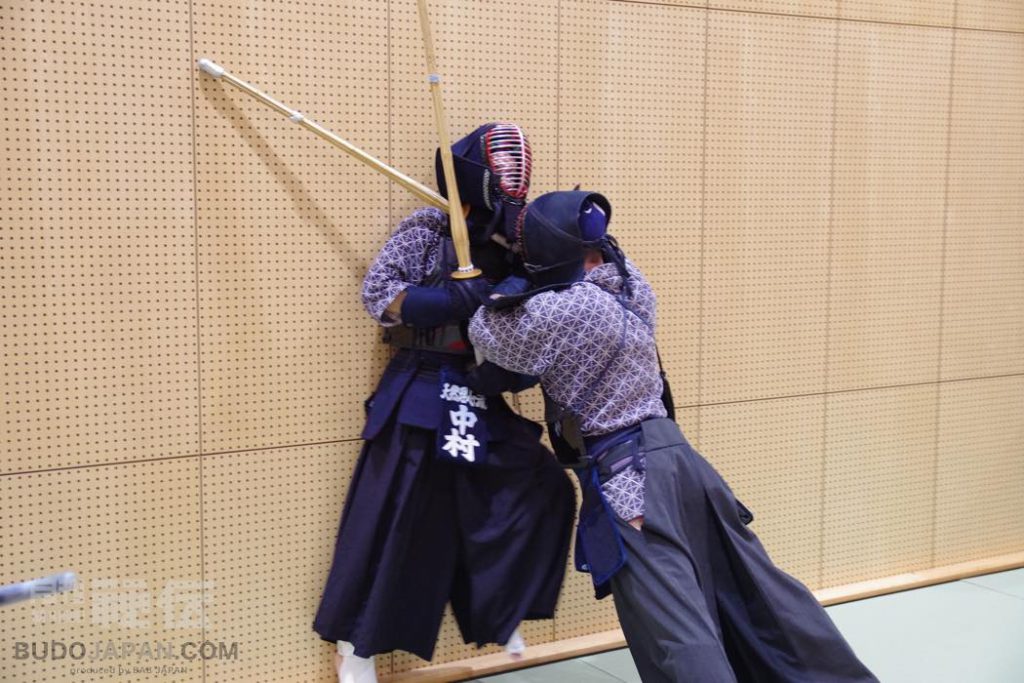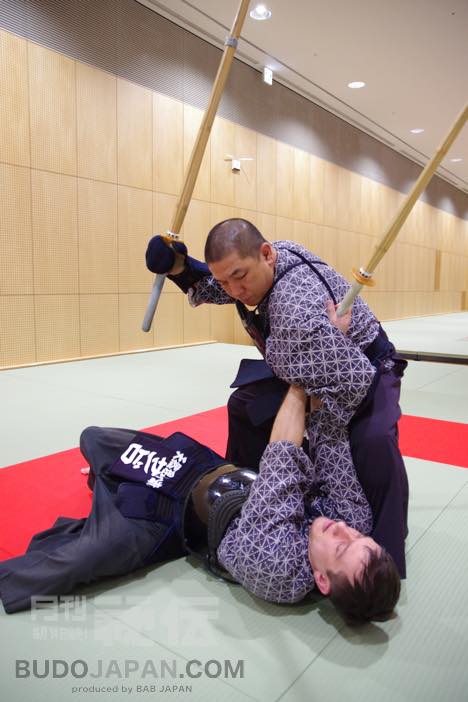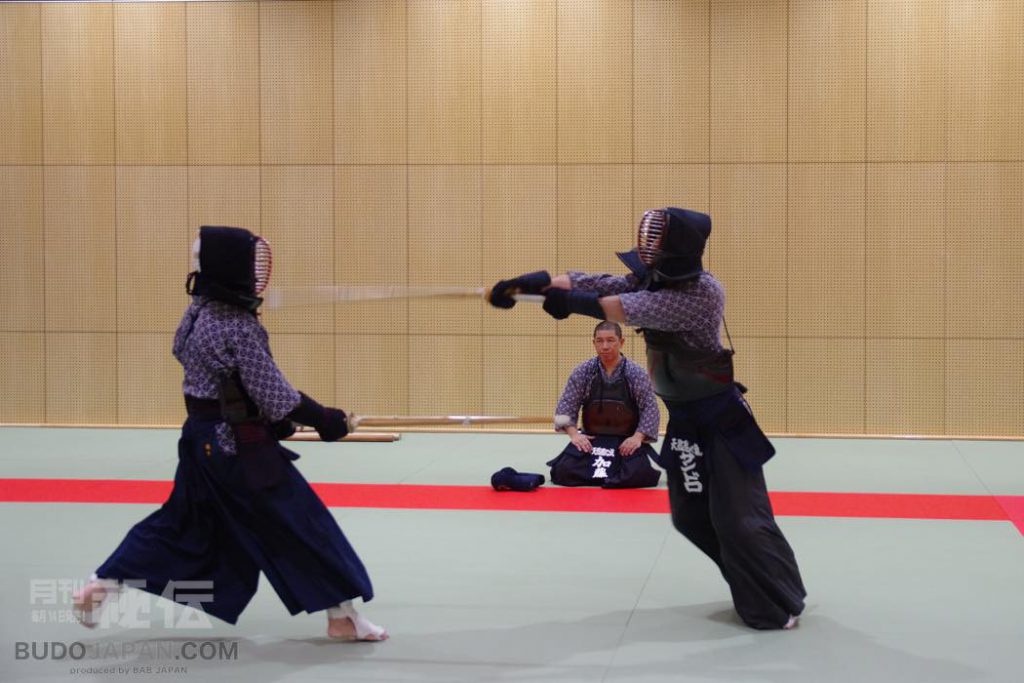Gekiken – Tennen Rishin Ryū’s original training method
“When I die, I don’t need an incense stick – just make sure the sound of the shinai won’t stop!” Kondo Yūgorō Sensei (the 5th generation’s headmaster of Tennen Rishin Ryū) spoke these words just prior to passing away.
Unfortunately, after the end of the Second World War, the sound of shinai (bamboo sword) no longer echo in many of Tennen Rishin Ryū’s dōjō.
Most people barely understand the word “gekiken”. Simply speaking, gekiken (literally “striking sword”) is a full-contact training system with bōgu (body armor) and shinai (bamboo sword) and is considered the predecessor of modern Kendō. With this term, we are not referring to the “sportified” kenjutsu found in the early Meiji Era (1868-1912), where financially devastated samurai families’ heirs performed in front of audiences in order to make a living; rather, we are speaking in regard to the training system that developed in the Kantō plain during the mid-18th century, that put an emphasis on reproducing real combat situations by allowing for practitioners to freely strike each other at will without fear of permanent injury.

Upon the conclusion of the era of the “sword saints” (Musashi Miyamoto, Tuskahara Bokuden and Isehara no Kami), kenjutsu training began to lose much of its substance. However, many samurai in the Kantō plain preferred rough training methods over formal practice; thus, laying the groundwork for many gekiken schools to develop.
Gekiken schools adopted the “men” (mask) and the “dō” (body armor) that were already being used in sōjutsu (spear art) schools, where practitioners were allowed to strike opponents as they desired in a relatively safe manner. Consequently, schools that decided to not include gekiken in their curriculums began to lose their appeal as their combat principles became based on theory rather than practical application.
Because of its strong connection to the Shinsengumi, Tennen Rishin Ryū has always been adored by novelists and researchers holding no specific affiliations. However, a lot of misunderstandings have been circulating regarding the school for the last one hundred years. Most common of which is the belief that Tennen Rishin Ryū has overly focused on katageiko (the form) instead of shinaigeiko (free sparring practice), and therefore the efficiency in a real swordfight. It is hard to say whether or not this statement should be considered a compliment or a critique of the school.
With that said, a question arises – “How is it possible for a person that doesn’t train to the point of physical and mental exhaustion with the bōgu to survive a life or death situation on the battlefield?” Reinforcing this, we have to consider that Tennen Rishin Ryū was codified in a specific era and environment where gekiken was already quite popular. When we look into the practice logs of students we clearly see that gekiken was practiced everyday (with specific details of won and lost bouts), while kata (form) were performed rather irregularly. Even kata were trained with bōgu equipped. However, nowadays the notion of training kata for an enbu (martial arts demonstration) is basically nonexistent.
In terms of techniques, variety, and depth Tennen Rishin Ryū isn’t that special: it’s just an old Kendō school meant to strengthen both the body and mind through intense, free sparring.
Such a statement might upset many Shinsengumi fans; however, Tennen Rishin Ryū is not about swinging a sword with movielike elegance. Kondō Isamu, Hijikata Toshizō, and Okita Sōji were strong because they practiced hard and diligently every single day.
So, what does gekiken training look like? First of all, in our school the concept of gekiken is about how to effectively apply techniques learned through katageiko. Gekiken is supposed to make one stronger regardless of whether they win or lose in a bout.
One might ask, what the difference is between it and modern Kendō – Well, Kendō is a wonderful art that has raised Japanese swordsmanship to new levels – where both speed and timing are worshipped by limiting strikes on men, dō, kote (gauntlet) and tsuki (thrusting to the throat). Thus, it is considered a safer practice. However, Gekiken is the opposite – it has no restrictions regarding where strikes are allowed on an opponent. Said differently, gekiken teaches how to strike body parts that are not protected by armor. This is because a samurai was expected to fight for and risk his life for his lord on the battlefield wearing a full set of armor. Consequentially, the purpose of gekiken is to resemble real combat situations as much as possible.
The men, kote and dō (including leg strikes) were universally considered as definitive blows; especially, during matches between schools (taryūjiai). However, when compared to today there were almost no limitations. It is often said that striking the men or kabuto (helm) is useless; but in the battlefield a full swing to the head, even if not lethal per se, would have caused a strong concussion that allowed for a warrior to finish off their enemy differently. This is why swordfights were also called “uchimono-gassen” (literally “striking battles”).
Another difference between modern Kendō is the possibility of grappling, throwing, submitting, and choking one’s opponents. Every ryūha has its own gekiken, but the ratio of kenjutsu and jūjutsu in our school is 1:1. Tennen Rishin Ryū has maintained a strong focus on the kumiuchi (grappling techniques), making it more similar to a mixed martial art of the past.

Here are some important points regarding Tennen Rishin Ryū’s gekiken: Firstly, the biggest difference with modern Kendō is that we always have to think of the shinai as if it were a real sword. Therefore, we must avoid situations that could lead to aiuchi (striking each other at the same time) from a frontal position.
- Press your opponent from a long distance to induce a strike. When the strike comes, avoid it with a body movement (taisabaki).
- If the kissaki (tip of the sword) of your opponent is in front of you, first deflect it, then enter his guard.
- Never place oneself under the cutting trajectory of an opponent’s sword.
- Parry a blow firmly then swipe the opponent’s sword with power.
Try to imagine your opponent’s sword in front of you – If you deflect it lightly, either an aiuchi or a counterattack is going to occur.
At the end of the Shōwa era (1926-1989) many schools merged into what is known as modern Kendō, causing them to lose their characteristics and most of their techniques. Schools therefore focused on preserving the kata by performing them during martial arts exhibitions.

Fearing that Tennen Rishin Ryū might completely lose its gekiken curriculum, our representative Katō Kyōji decided to establish the Tennen Rishin Ryū Bujutsu Hozonkai three years after receiving his Menkyo Kaiden from his teacher Hirai Taisuke Sensei, who passed away in 2013.
In conclusion, Bujutsu Hozonkai’s gekiken is merely Tennen Rishin Ryū’s original training system: a simple, old Kendō school.
Pictures courtesy of Budojapan.com
Read Budojapan.com feature article Tennen Rishin-ryu: Kondo Isami’s legacy -and beyond by Mr. Grigoris Miliaresis.
